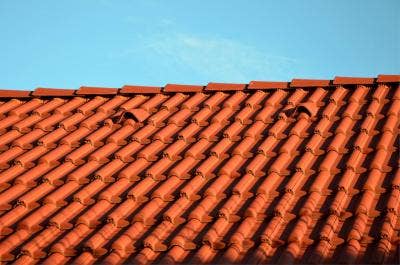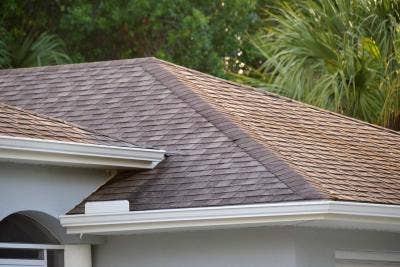7 Quick Tips for Spring Cleaning Your Roof

When we think of spring cleaning around the home we may tend to move our minds towards some kind of old fashioned imagery of a housewife dusting the mantelpiece and vacuuming behind the sofa and other out-dated ideas from a 1950s TV commercial. Nevertheless, the springtime can be a good time to €˜get your house in order', to address those little issues that have lingered throughout the winter, ready for a spick and span remainder of the year. And when you do get around to these tasks €“ we'd urge you to remember that your roof is likely in need of a spring clean all of its own. So here are our tips for cleaning your roof.
The winter months may have been harsh ones, both on homeowners and indeed on their homes. Storms, heavy rain, wind, ice and snow may have taken their toll and the roofs will have taken more than their share of the brunt.
So once the weather begins to ease, the night's start to draw out, the temperatures start to rise and the buds of spring begin to bloom, then take the opportunity to give your roof the once over and ensure that it's clean, in good repair and fit to meet the challenges of the year ahead.
Because you don't want to be tending to repairs when the bad stuff comes back.
Be Safe
The first, and most important tip we can offer you is this: STAY SAFE.
A roof is not a place to be lax with health and safety measures and all necessary measures and precautions should be taken.
This might entail calling upon the services of a roofing professional who will know their way about a household roof. They'll be able to survey the entire roof, checking all the critical areas and they can report back to you what, if anything is needed and take the appropriate action.
If, however, this is an expense you'd rather avoid and are going to do the work yourself then ensure you are working in a safe manner. This might be appropriate scaffolding, correctly erected to provide you with a safe working platform, as well as appropriate footwear, safety clothing and PPE. Working at high levels is dangerous and you need to be sure you know what you're doing.
If in doubt, let the experts take care of it.
Check your guttering and downpipes

The winter months can cause problems for your guttering, downpipes and other drainage on your home and checking these as part of your roof top spring cleaning should be incorporated to avoid long term harm to the property. If there's been excessive wind then gutters and pipes may have become loose or detached through damaged joints and brackets. Similarly the gutters can get clogged up from debris occurred from wind or rain. Moss, leaves and even loose shingles can be shifted in poor weather conditions and find their way into your drainage system. This debris can be the cause of blockages in the pipes which in turn can lead to inadequate drainage (or no drainage at all) or overflowing water, flooding and issues with damp.
Have a look at the Floplast Gutterbrush to keep your gutter clear.
Check around your chimney and your vents

When carrying out a spring inspection of your roof be mindful to check around the chimney and vents for signs of damage and disrepair that might have occurred through the winter weather. Heavy storms or drastic changes in temperature can have effect on seals and flashing, shifting or damaging material which could lead to leaks in the future.
Check the chimney and vents for visible signs of damage, maybe gaps around joints or cracks which may have appeared in the caulk. Maybe go into your attic and check from the inside for any light which may be coming through cracks or gaps in the roof.
If you have roof windows or skylights, inspecting around the edges for similar signs of damage should also be undertaken.
Check for broken or missing shingles

High winds, rain, storms and extreme temperatures can, over time, cause shingles to degrade, become damaged or even come loose and away from the roof. As the shingles are important for maintaining the watertight properties of your roof, it's important to inspect for any areas where they may have broken or gone missing altogether.
Broken shingles can lead to access points for water which, in the long term can lead to leaks, the costly problems associated with damp. You can spot potential cracks or breakages in asphalt shingles as there will be areas or lines that appear black or darker than the rest.
Shingles which have come away altogether will likewise cause deficiency in the watertight properties of the roof, while also having the additional problem of potentially ending up in your guttering which, as we've discussed, can cause additional headaches.
Missing or broken tiles?

Tiles that are worn, broken, shifted or disappeared altogether will obviously be a problem for the home's protection against damp and leaks. So any spring clean activity needs to factor in the inspection and repair or replacement of any such tile problems. Visual inspection from ground level might be possible with use of binoculars or even the zoom lens of a good camera perhaps. If you see black patches among the tiles then the chances are that tiles have been damaged or moved through the poor weather.
Moss Clearance

We've discussed before the problems associated with moss, and spring is as good a time to address this as ever. Removing moss and lichen growth, as well as treating the roof to discourage its return, can help identify broken tile issues that might be lurking underneath. It also removes excessive moisture on the roof, retained by the moss which can lead to saturation and damp problems.
As well as moss growth on the roof, stormy weather in the winter months could also lead to issues from trees in the vicinity depositing unwanted debris on the roof. Broken branches and twigs which could cause damage to seals or flashing perhaps, or cause blockages to guttering.
Visual Assessment
Finally, if you are giving the entire home a spring time spruce up then take the opportunity to assess matters indoors which might highlight lingering issues relating to your roof. As mentioned, check your attic for signs of cracks and gaps in your roof structure. This might be in the form of light leaking in through small gaps or even more noticeable issues such as damp joists or timber frames. Check the eaves for signs of staining €“ a clear indicator of damp and then, as you work inside the living areas itself, check the ceilings. Small bulges in the paper or discolouration is again, a sign that something, somewhere on your roof, needs to be addressed.
Our Top Videos.


How to install a Velux Integra Electric Roof Window (5 Parts)
In this five-part guide, we take you through the full installation of a Velux GGU Centre Pivot Integra Roof Window onto an...


How to install a Duratech Centre-Pivot Pine Roof Window
Once you begin unpackaging the window, you’ll find in the box the brackets, the handle and the fixings. And there will also be some instructions...
Ideas & Advice
How-tos, tutorials and videos


How and why to use or snap a chalk line
Chalk lines are the fastest way to mark straight guidelines on flat surfaces. They are used extensively in the building and construction industry to speedily and accurately ‘draw’ straight lines between two points. Chalk lines are inexpensive tools...


Skylight Blinds: A Guide To The Different Types
Like many household product, blinds for skylight windows come in all shapes, sizes, and materials. Some are designed with a tangible purpose in mind, while others are more for show. One thing’s for sure - buying any type of skylight blind...








